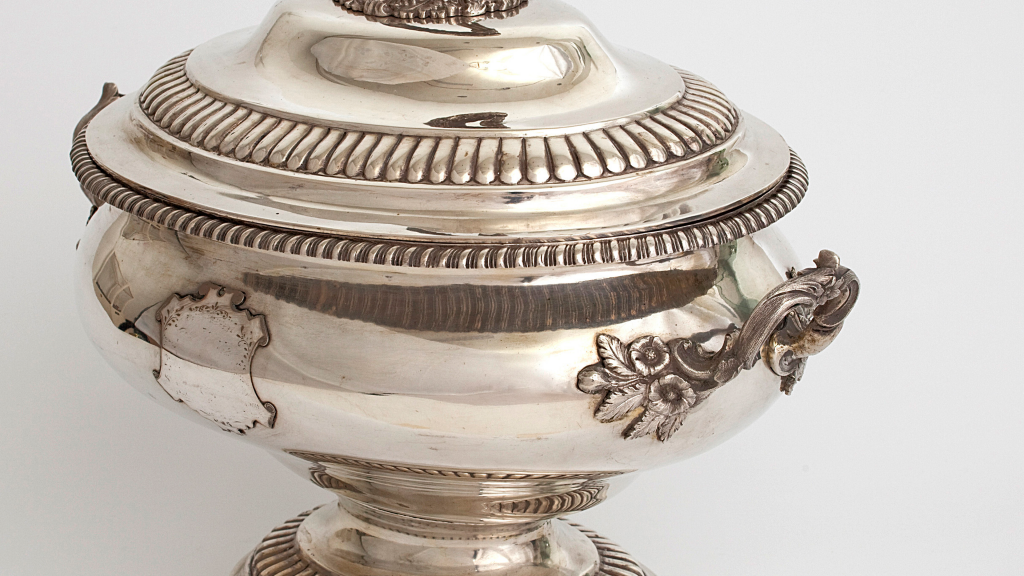
When it comes to design sensibilities today, I think many would describe this tureen as somewhat gaudy – particularly because any extravagant covered dish for serving soup would be a strange addition to modern dinner tables. However, this style of decorative art was once considered the height of refinement. Emerging from the salons of early […]
Read More…
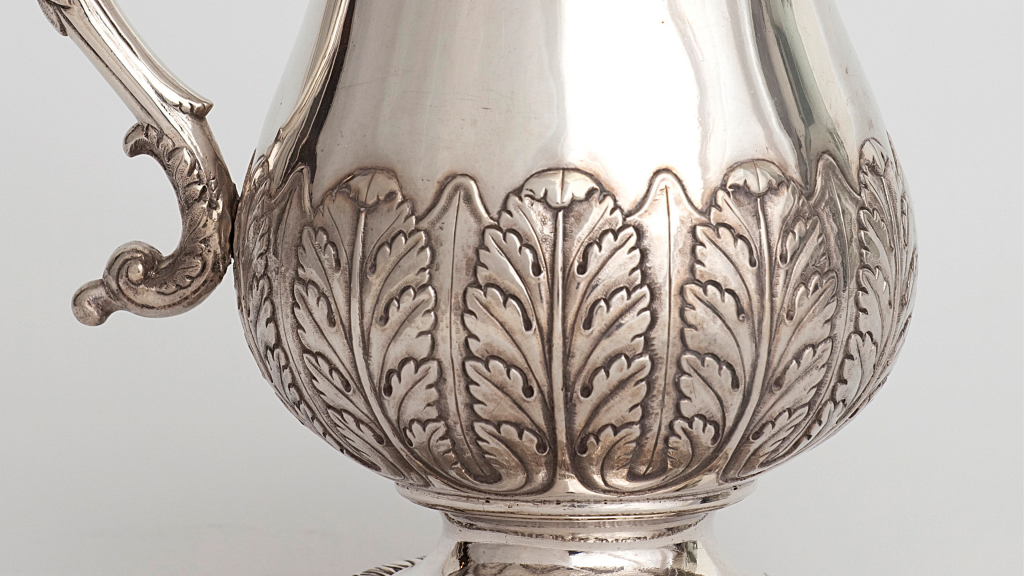
It is hard to know exactly how William Edwards (1819-1899) must have felt arriving to Melbourne in 1857. At the very least, he must have been slightly more comfortable than the average English traveller at the time. In an arrangement reserved only for noteworthy passengers, he had travelled in the chief cabin of the Blanche […]
Read More…
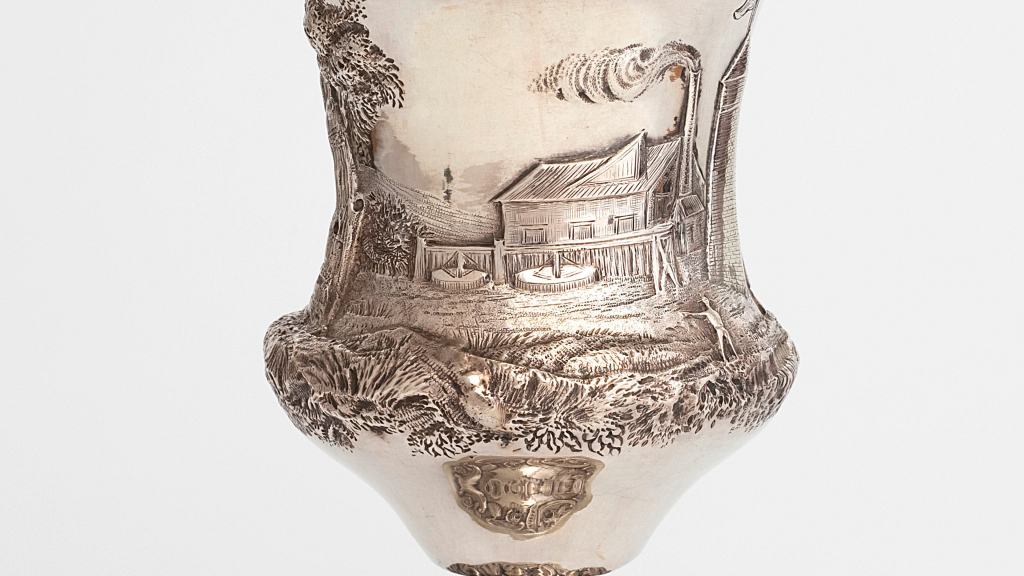
One step removed from the sweltering heat of the forge, smoke billows from a chimney between towering trees. Small figures are at work around the refinery – surveying, shoving, and squatting. Steep slopes of earth disappear into the distance of a spotless sky. This sterling silver goblet was made by William Edwards (1819-1899) and retailed […]
Read More…
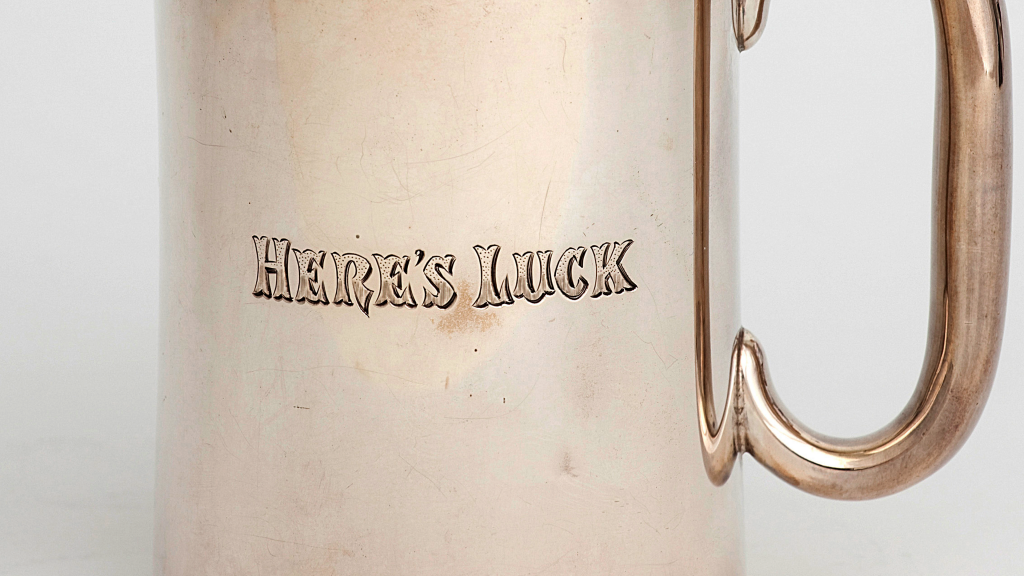
Before the 1850s, Australian silverware was incredibly scarce. The nature of settlement, including a low population and lack of materials, meant silversmithing was an extravagance. That is, until the discovery of silver, especially in Broken Hill, made it possible for a few talented craftsmen to become prolific manufacturers. Joachim Wendt (1830-1917) was one of the […]
Read More…
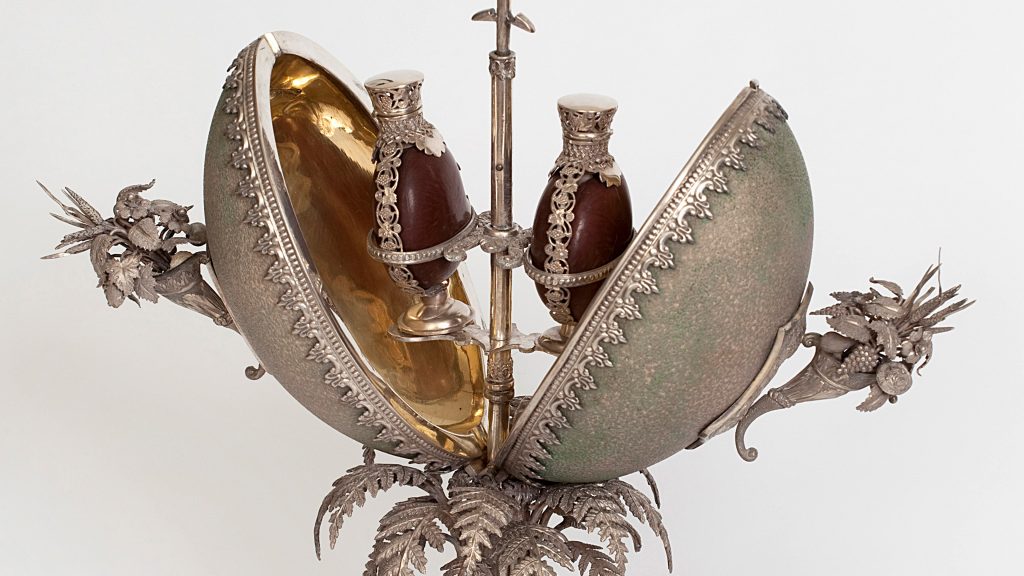
The mid-nineteenth century gold rush brought smiths and jewellers to Australia intent on reaping the benefits of a newly prosperous Australia. In 1858, Henry Steiner (1834-1914), a German silversmith, immigrated to Adelaide, South Australia, for that very reason. Now known as one of Australia’s most prolific silversmiths, much of his success was made possible by […]
Read More…
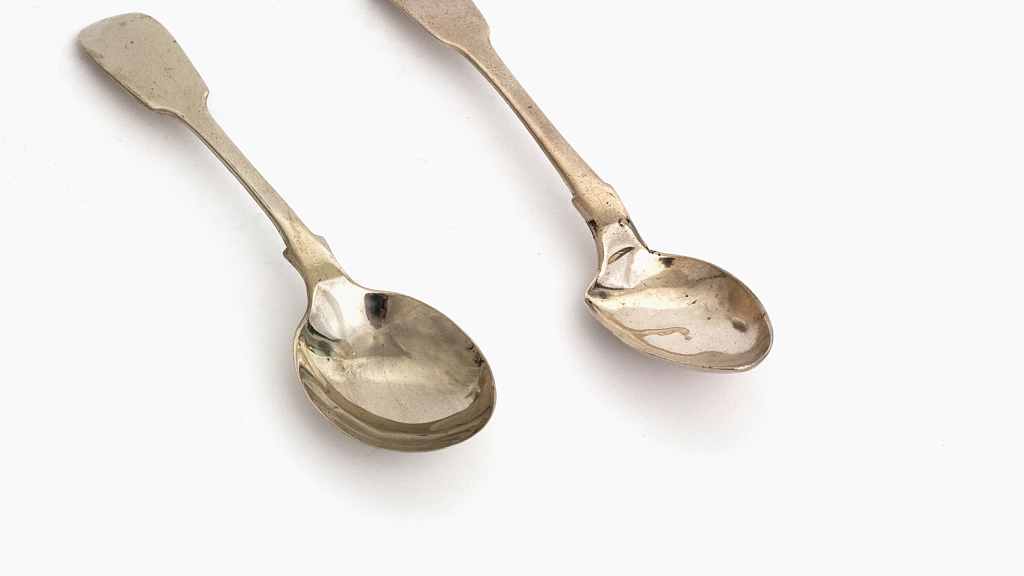
Silver spoons were very nearly Alexander Dick’s (c.1791-1843) undoing. A free settler who arrived in 1824, he was a working silversmith with a prospering business in Sydney in 1826 when he made a deal that cost him dearly. Anxious to produce an order of silverware for a client, he knowingly bought a set of ‘old’ […]
Read More…
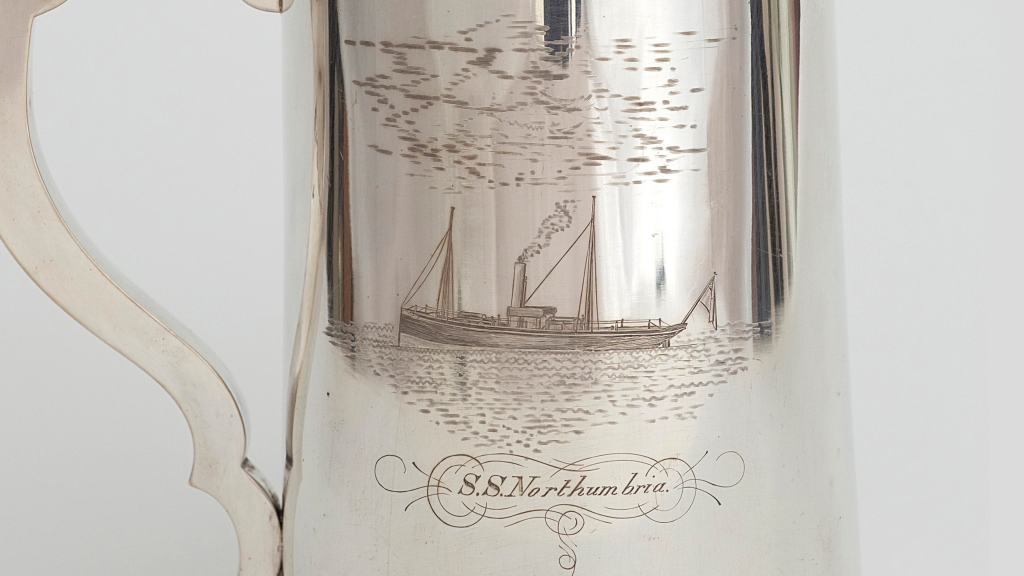
This testimonial tankard represents two business successes for the Sydney merchants Christopher Newton Bros & Co. It is made of silver mined from the Sunny Corner silver mine, near Rydal just west of Lithgow, in which they were the major shareholders. In April 1885, around the time silversmith Evan Jones made this tankard, the mine […]
Read More…
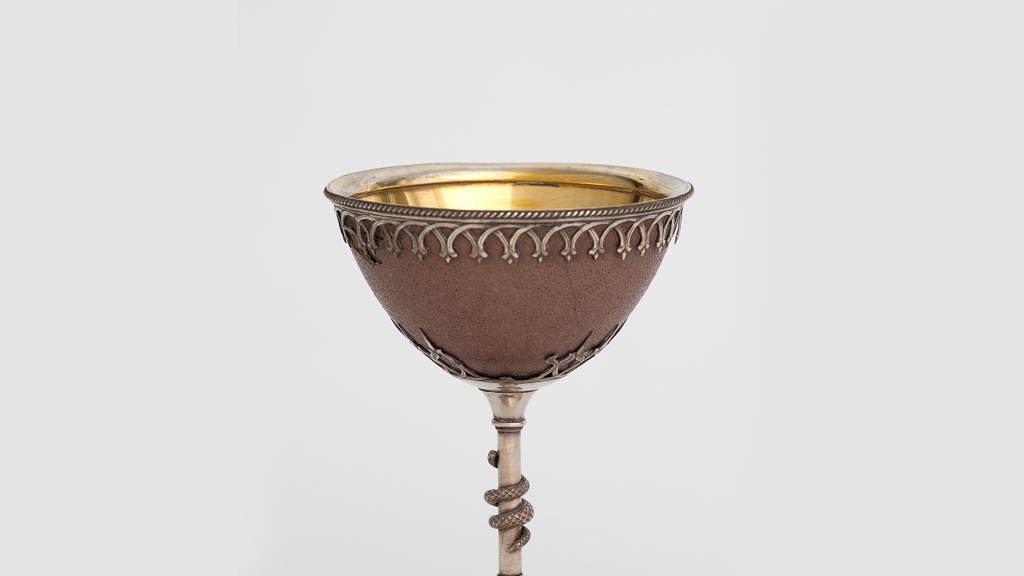
In 1866, the Danish-born silversmith Christian Ludwig Qwist sent a silver-mounted emu egg jug and drinking cups, made in his Hunter Street shop in Sydney, to the Intercolonial Exhibition in Melbourne. Qwist arrived in Melbourne in 1853, in the early years of the gold rush. He’d worked as a photographer and silversmith in the boom […]
Read More…
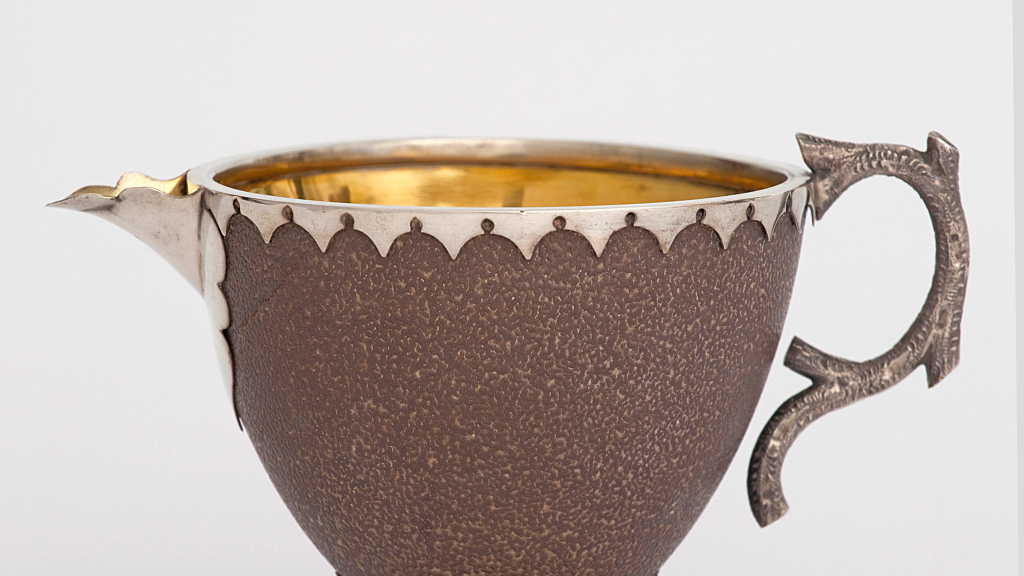
Two emu eggs to make a ‘bachelor tea set’ – one for the teapot, one half for the sugar bowl and the other for the cream jug. Was the cream jug ever used? It’s not likely. The fashion for goblets and cups made from silver mounted emu eggs reached its height in the second half […]
Read More…
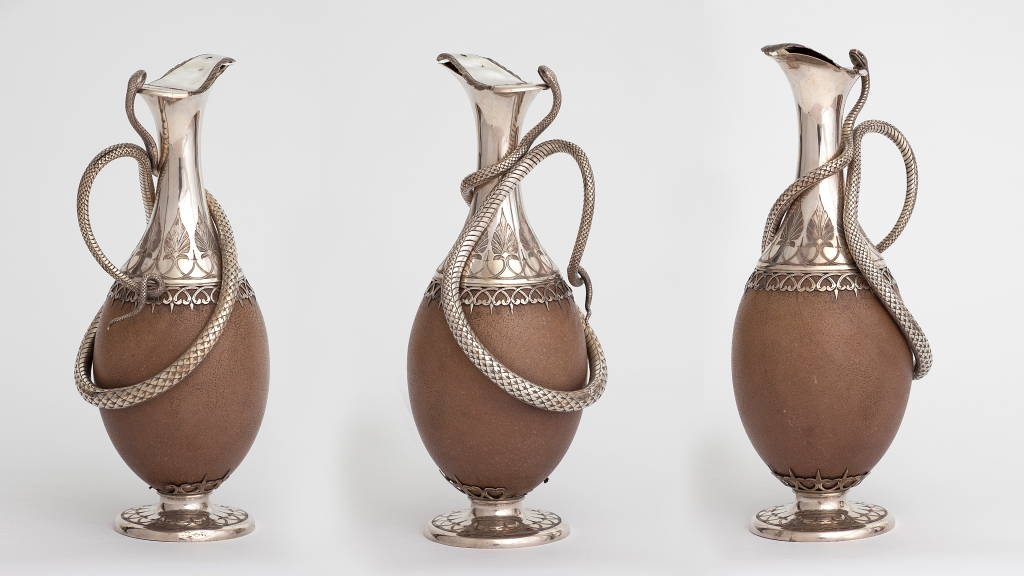
The sinuous silver snake that forms the handle of this claret ewer is poised to strike – but at what? The snake is focussed on the hinged lid of the ewer, which has a hole where perhaps a knob was once attached. Could the missing knob be the snake’s prey, and could it have been […]
Read More…











